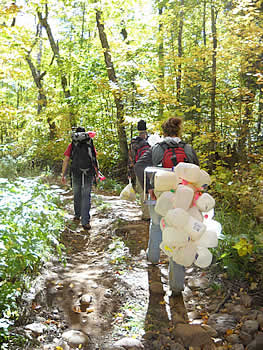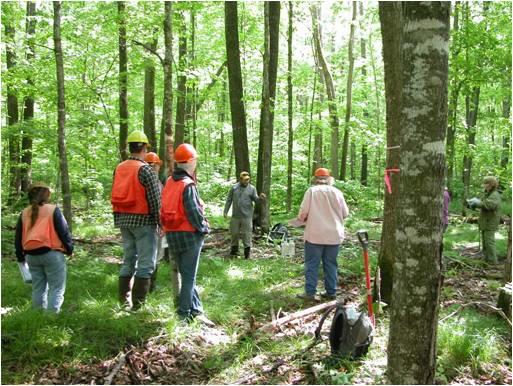
Non-native earthworm invasions in north-temperate North America cause substantial adverse effects to hardwood forest ecosystems. Quantification of invasions is necessary for understanding impacts and identifying remnant earthworm-free areas, but existing sampling techniques are effort intensive and/or environmentally damaging.
We are often asked by land managers if there is an easier way to collect data on the distribution and severity of earthworm invasions. This question has led to the development of a protocol that allows rapid classification of earthworm invasion into five stages based primarily on visual assessment of the forest floor. The 5-stage protocol provides an efficient approach for roughly assessing earthworm invasions in hardwood forests of the U.S. northern Midwest, can be implemented with minimal training, and serves as a blueprint for similar protocols in other regions experiencing earthworm invasions.
What is the difference between using the IERAT and conducting earthworm sampling with other techniques?
Results generated from the IERAT are more useful than other techniques for informing decisions that land managers make (e.g. Where should intensive earthworm sampling be conducted? Which areas require protection from earthworm invasions?). Other sampling techniques can be used to generate a rough list of the earthworm species present but the IERAT is the only method to provide an assessment of the magnitude of earthworms’ ecological impacts. Furthermore, other sampling techniques may result in inaccurate population quantification during hot and dry conditions when earthworms are less active. The IERAT is not sensitive to these conditions and can be used throughout the summer.
Forest types
The IERAT has been developed to identify impacts of earthworm invasions in Aspen/Birch and Sugar maple/Basswood woodlands. These forest types make up 51% of Minnesota’s and 29% of Wisconsin’s forested land.
IERAT Training Sessions
We have found that a short (2-hour) field training session is essential for accurate and efficient use of the IERAT, and for ensuring that data are consistent across different surveyors. We conduct training sessions in northern Minnesota and northern Wisconsin throughout the summer season and at the request of interested user groups. To inquire about training sessions or to ask questions about the IERAT or earthworm invasions, please contact [email protected].
|
|

|
IERAT trainees learn to assess invasive earthworm impacts to the forest floor based on visual assessment of the litter layer and understory plant communities
Additional Research
We are looking for additional participants to help us expand the utility of the IERAT in additional forest types. If you are interested in learning more contact [email protected].
This web page supplements an article published in the Natural Areas Journal which is published by the Natural Areas Association.